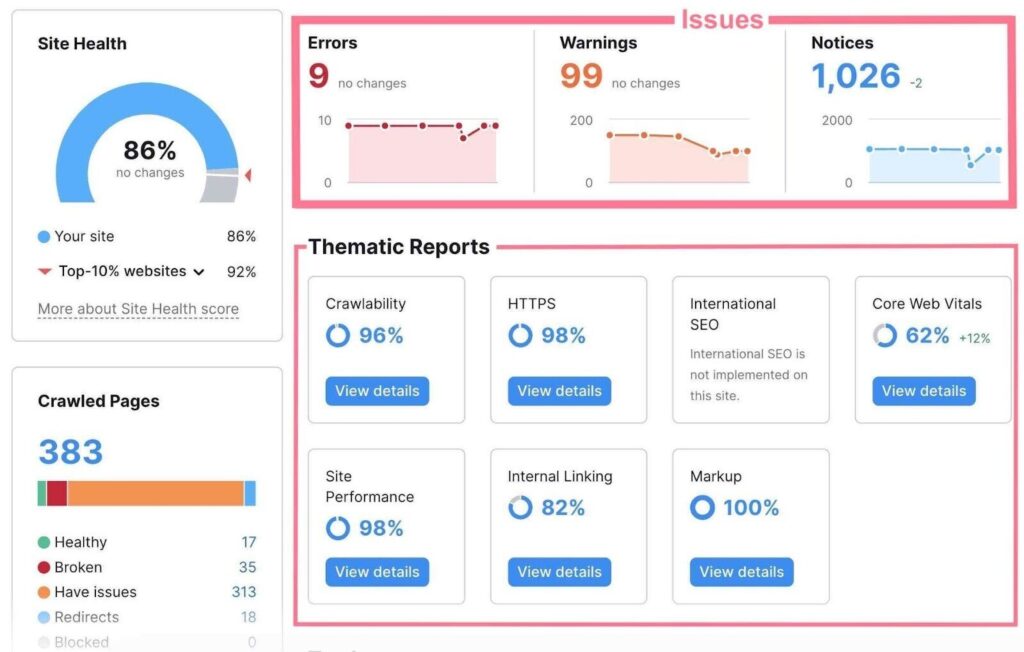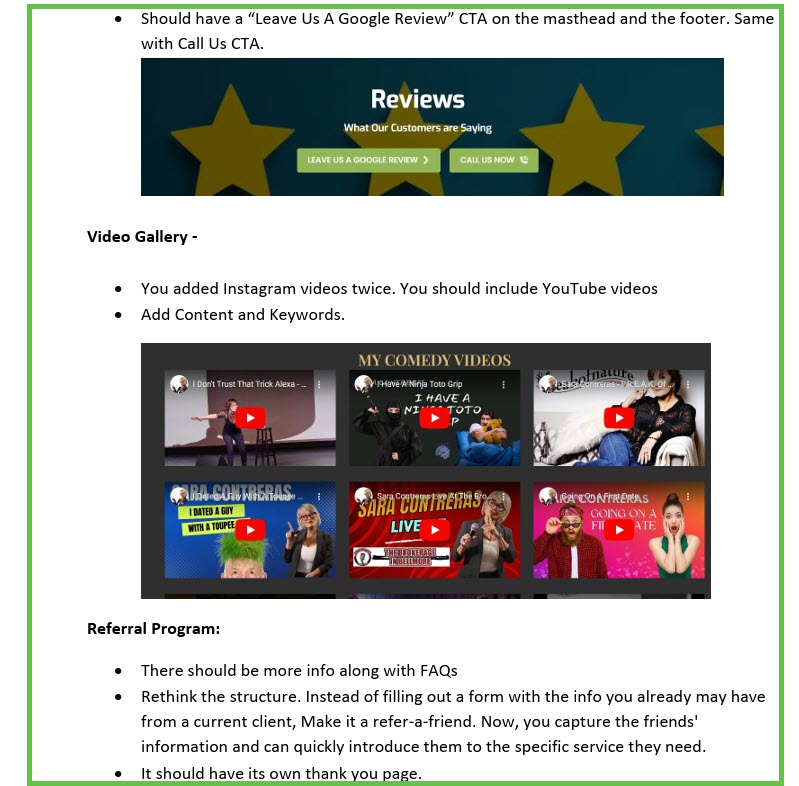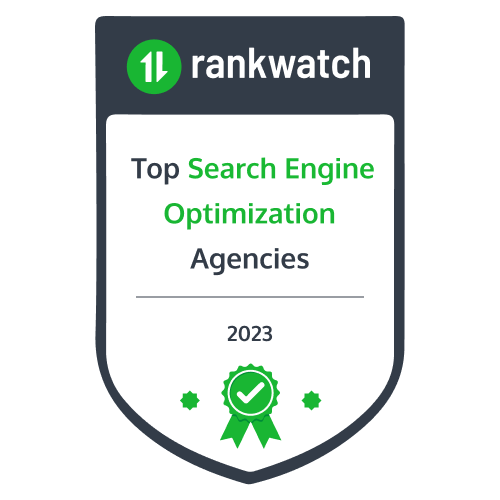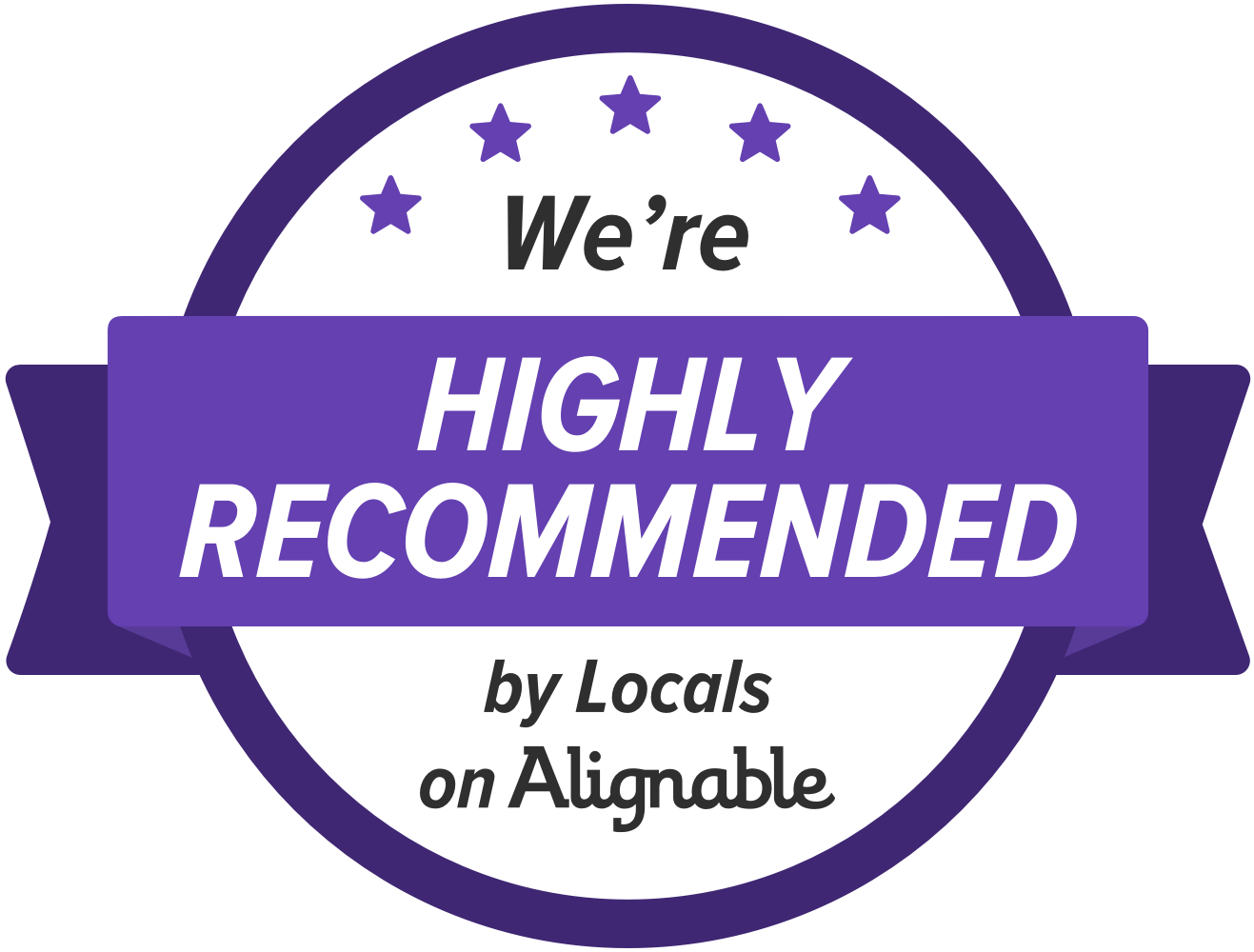In an era where many digital agency promises first-page Google rankings and lightning-fast SEO results (SEO results can take 6-12 months), SEO audits have become the go-to marketing tool for agencies trying to win new clients. But here’s the truth that few will say out loud: MOST SEO AUDITS ARE COMPLETELY USELESS!!
Instead of offering true insights, they’re often automated, white-labeled reports produced in seconds by tools like SEMrush, BrightLocal, or Moz, filled with inflated problems and vague suggestions. These reports are designed not to help, but to scare — and ultimately convert you into a paying client.
If you’ve recently received one of these “free SEO audits” and found yourself overwhelmed with red alerts and warnings, this article is for you.
We’re Going To Break Down:
- How these audits are created and what they miss
- The dangers of relying on fake negatives
- Why a manual SEO audit is worth the investment
- What an effective audit really looks like
- How businesses are tricked by cold audit offers
- Red flags to watch for
- Common FAQs about SEO auditing
How Automated White-Label SEO Audits Work
Automated SEO audits, offered by agencies under the guise of expert analysis, are typically powered by tools like SEMrush, BrightLocal, Moz, Ahrefs, or Woorank. These platforms crawl your website and assess technical aspects such as:
- Page speed
- Meta tags
- Alt image attributes
- Broken links
- Redirects
- Keyword density
- Internal link structure
After a scan lasting just a few minutes, the software generates a downloadable PDF full of charts, graphs, and “issues” — which the agency can slap their branding on and deliver to you as a white-labeled “expert audit.”
Below is an example of an auto-generated audit

While these tools may seem impressive on the surface, they are primarily designed for scalability, not accuracy or insight. Most SEO agencies use these audits as lead generation bait, offering “free website reports” that sound authoritative but are really nothing more than branded exports from software dashboards. Because the audits are white-labeled, the client often has no idea the report was generated in seconds using off-the-shelf software. What’s more concerning is that many of these reports contain alarmist language to create urgency, flagging dozens of “errors” that often have little to no actual impact on SEO performance. This practice has become so widespread that businesses are routinely making decisions—and spending thousands—based on flawed, irrelevant, or exaggerated data.
Fake Negatives: A Scare Tactic in Disguise
Here’s how it works:
- The software flags missing alt text on background or decorative images that don’t affect rankings.
- It lists short meta descriptions as “critical errors” even though they’re often intentional or harmless.
- It suggests your keyword density is “too low,” even though Google hasn’t used keyword density as a ranking factor in years.
- It flags minor load speed variations that are within industry norms.
These “errors” are not only outdated and irrelevant, but they often appear severe in the report to generate a sense of panic. Agencies know that if you see dozens of red warnings and technical jargon, you’re more likely to feel overwhelmed — and ready to pay someone to fix it.
Why That Strategy Backfires
In fact, relying solely on these templated audits can steer businesses in the wrong direction. It’s not uncommon for business owners to invest thousands of dollars fixing so-called “errors” that have little to no bearing on their search rankings, while the real issues—like poor content quality, bad user experience, confusing site structure, or weak branding—go completely unnoticed. These surface-level audits distract from what truly drives SEO success: delivering value to users and creating a seamless, trustworthy online experience. Without real human insight, you’re not solving problems—you’re just checking boxes.
Why Manual SEO Audits Matter
So, what’s the alternative?
A manual SEO audit performed by an experienced SEO professional is the only way to get a comprehensive, tailored, and actionable assessment of your website’s performance. These audits require time, strategic thinking, and experience—not just a subscription to a tool.
Here’s why manual audits are essential:
A. Tailored & Context-Aware Analysis
Manual audits evaluate your specific business goals, industry competition, and customer behavior. They don’t rely on a one-size-fits-all checklist but offer insights tailored to your niche and audience.
B. Functional & UX Review
These audits look beyond code to assess user experience (UX):
- Can users easily find what they need?
- Does the site feel trustworthy?
- Is the design helping or hurting conversions?
C. Strategic SEO Review
Instead of pointing out keyword density, manual audits analyze whether your content matches search intent, is helpful, readable, and answers user questions effectively.
D. Technical Review with Prioritization
A good manual audit doesn’t just say “your site is slow.” It pinpoints why, explains how to fix it, and tells you how important it is compared to everything else.
E. UX, Branding & Visual Design
Manual audits dive deep into:
- How your brand is perceived visually
- Whether CTAs are in the right place
- Whether your mobile site creates a smooth journey
- How your design elements impact user trust
- F. Clear ROI-Focused Action Plan
Rather than a data dump, you get: - Prioritized tasks (critical vs minor)
- Strategic roadmaps (quick wins vs long-term gains)
- Real explanations and solutions
What an Ideal Manual SEO Audit Looks Like
A true manual SEO audit goes far beyond what automated tools can detect. It’s a thoughtful, hands-on evaluation conducted by a seasoned SEO professional who not only understands algorithms and code but also how real users interact with your website. Instead of relying on templated checklists, a manual audit blends technical analysis with strategic thinking—reviewing everything from your content quality and keyword strategy to the visual appeal, navigation flow, and even how well your site reflects your brand’s voice. It’s not just about finding flaws—it’s about uncovering growth opportunities and aligning your site with both search engines and human users.
Below is a small sample of a manual audit:

Step-by-Step Breakdown
1. Initial Discovery
Learn your goals, audience, competitors, and market positioning.
2. Crawl & Technical SEO
Full crawl for errors, broken links, redirect chains, indexing issues, schema markup, and site architecture.
3. On-Page SEO
Meta tags, header structure, content relevance, image optimization, internal linking strategy.
4. UX & Visual Design
User journey evaluation, layout consistency, CTA placement, readability, and accessibility.
5. Branding & Messaging
Does your design align with your brand values? Is your tone appropriate for your audience?
6. Mobile Responsiveness
Page load speed, mobile user experience, mobile-first indexing issues.
7. Competitor Benchmarking
What your competitors are doing right (and wrong), and where you can outperform them.
8. Content Quality & Strategy
Are you addressing user intent? Is the content helpful, clear, and comprehensive?
9. Link Profile Review
Are backlinks helping or hurting your reputation? Are there spammy links?
10. Reporting & Roadmap
An organized list of findings, clearly prioritized by urgency and ROI, with realistic timelines.
SEO Content & UX: Why a Good Manual Audit Evaluates Branding and Experience
Google no longer ranks websites based solely on keyword optimization and technical cleanliness. In today’s SEO world, user experience, helpful content, E-E-A-T (Experience, Expertise, Authoritativeness, Trustworthiness), and branding play pivotal roles.
A manual audit takes this into account:
- Does your website answer the right questions for users?
- Does it visually appeal to your target audience?
- Is the brand message cohesive across all pages?
- Are there conversion obstacles?
- Does the content feel trustworthy and authoritative?
Without a professional reviewing these layers, even a technically perfect website can underperform in search rankings.
How Businesses Get Suckered into Thinking Their SEO Isn’t Working
It happens every day. A business owner receives a random email from someone they’ve never heard of before. The subject line says something like:
“We found 37 SEO issues on your website. You’re losing traffic!”
“Your site is not optimized for Google. See your free audit.”
“You’re being outranked by your competitors — here’s why.”
Attached is a PDF audit report, full of alarming graphs, red flags, technical jargon, and scary-sounding issues. Maybe they used your business name in the audit, or copied a screenshot of your homepage to make it look custom. But here’s the truth:
These are automated audits created by bots — not experts.
They use tools like SEMrush, BrightLocal, Moz, or even free browser extensions, generate the audit in seconds, and blast out hundreds of cold emails to unsuspecting business owners every day. You never contacted them. They don’t know your business. They don’t know your goals. They don’t even know your name.
And yet, the audit looks official enough to make you doubt your current SEO provider — or even convince you that you’re doing everything wrong. These are 100% SEO scams
The Dangerous Cycle of False Promises
Here’s how the trap works:
- You get a cold email with an SEO audit attached.
- You open it and panic: “Why are there so many errors?”
- You begin to doubt your current agency or internal team.
- You reply to the email or request a call.
- The salesperson assures you that they can “fix everything” and “get you ranking #1.”
- You jump ship… and hire them.
Suddenly, you’re paying thousands of dollars a month to a new company that never looked at your website manually, never asked about your customers, and never took time to understand your market. And what’s worse? You probably just left a reputable SEO provider — all because of a misleading automated audit.
Don’t Fall for the Bait: Red Flags to Watch For
🚫 Any company that reaches out to you out of the blue with an audit — without you requesting it — is doing it for one reason: to scare you into hiring them.
🚫 Any company offering a free audit within seconds isn’t evaluating your site with care. They’re just exporting data from a crawler and pretending it’s insight.
🚫 The moment you request one of these audits, you’ve taken the bait. You’re in their sales funnel. They’ve hooked you with fear-based marketing, and now you’re more vulnerable to manipulation.
Protect Yourself: What You Should Do Instead
✅ If you’re genuinely concerned about your SEO, don’t rely on a cold email. Find a reputable agency or consultant yourself.
✅ Ask if they perform manual audits and walk through their process. A legitimate agency will offer strategic insight—not a data dump.
✅ And if you already have a team or agency you trust, share the audit with them and ask for clarification before making any decisions.
FAQs About SEO Audits
Question: Why can’t I just use SEMrush, Moz, or BrightLocal myself?
Answer: You can — and they’re great tools! But they only provide raw data. It’s the analysis, prioritization, and actionable recommendations from an expert that turn data into a real strategy.
Question: What does a manual SEO audit cost?
Answer: Ours are FREE! Other agencies may charge because they care more about the mighty dollar. Depending on your site’s size and goals, you can expect to pay anywhere from $800 to $10,000+. For a small local business, expect $1,500–$2,500. For larger or e-commerce sites, expect $5,000+ for deep competitive analysis.
Question: How long does a manual audit take?
Answer: Our audits take 2-3 days. Other agencies may take anywhere from 1–4 weeks, depending on complexity, page volume, and how deeply the agency goes into your strategy and competitors.
Question: How often should I audit my site?
Answer: Most businesses benefit from a full SEO audit every 6–12 months. If your site is large, high-traffic, or in a fast-changing niche, quarterly audits may be appropriate. If you’re signed up with an SEO agency, they should NOT charge you a dime.
Question: Will a manual audit still use tools like SEMrush or BrightLocal?
Answer: Yes, but only as one part of the process. Tools gather data — the SEO expert interprets it, filters out noise, and applies real-world insight. Any agency that only provides you with an automated audit is lazy and unqualified! No buts about it!!
Question: Should I be worried if I have 100+ “issues” in an automated audit?
Answer: Not necessarily. Most reports are padded with minor items. What matters is context: which of those issues actually impact rankings or conversions? Only a human can tell. This is how SEO agencies hook you.
Question: How do I know if an agency did a real audit or just used a tool?
Answer: Ask them:
- If it looks very colorful with just stats and graphs and no input about each page of your website. It’s automated
- Did they review specific pages manually?
- Did they look at your competitors?
- Can they explain why each recommendation matters?
- Are their suggestions tailored to your brand and business goals?
Real SEO Audits Require Real Strategy
At the end of the day, an SEO audit is only as good as the person performing it. Automated audits powered by SEMrush, Moz, or BrightLocal are just tools—they don’t think, they don’t analyze, and they don’t care about your business goals. They can only spit out predefined checklists and general benchmarks.
If you want meaningful insight, improved search rankings, and a clear growth strategy, skip the fake negatives and flashy dashboards. Find an SEO agency that performs real, manual audits, led by a team that’s willing to look at your website like a customer would—with fresh eyes, strategic thinking, and a focus on what really matters.
If you’re looking for an honest and manual SEO audit, contact Organical – The SEO Experts today!





